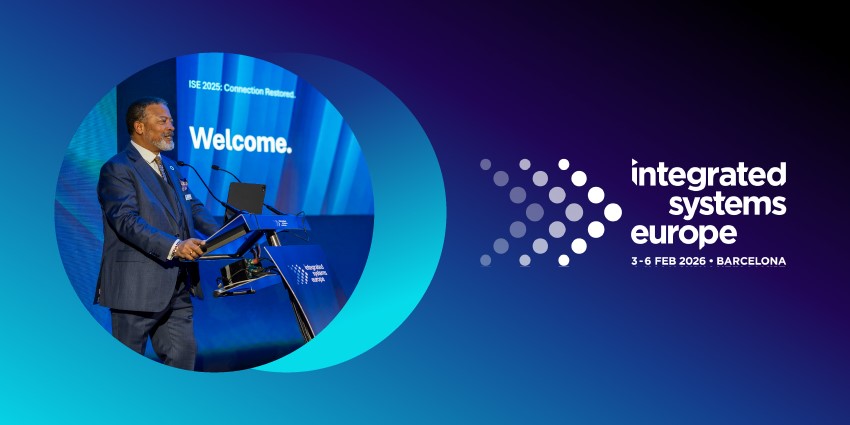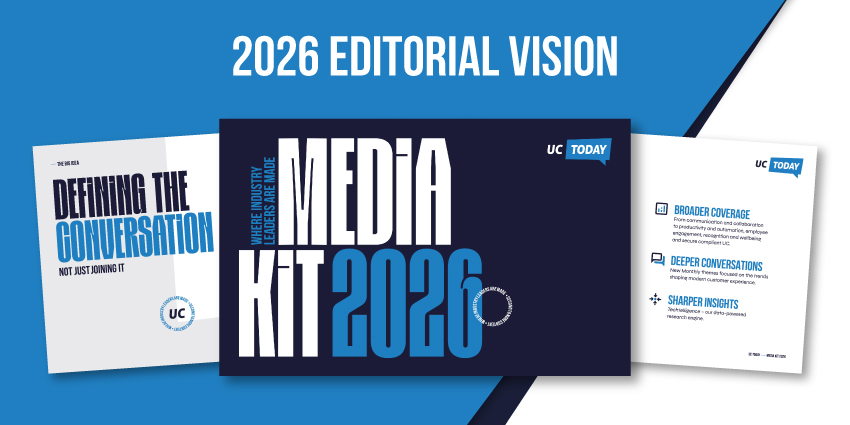The world has come a long way since the first headset users jumped on a call.
Way back to even before Skype for Business began revolutionizing remote collaboration, they resembled airline pilot earphones: giant bricks on either side of the head, oversized ‘lollipop’ boom microphone, and an infuriatingly-disobedient curly cable connecting them to a computer.
It was just voice back then too; videoconferencing a disruptive concept yet to even begin transforming the world of work into the modern ‘anywhere, anytime’ hybrid model that is the new normal.
Today, headsets, cameras and video bars are the essential tools on which workers of all kinds depend. And – if you pick a supplier that has been in the vanguard of the last 30 years’ worth of innovation and evolution – they are now lightweight, sleek and packed full of AI-powered smarts.
For end user organisations and IT service providers alike, it is hardware that not only maximizes the benefits of integrated tools such as all-in-one-place unified communication platforms and virtual assistants, but also enhances the day-to-day quality and equity of every online interaction.
No surprise then that users and their employers have become more and more discerning and that high-end vendors are obsessed with delivering a stellar experience.
“Where it all began and where we are now are like different worlds,” says Nigel Dunn, Vice President & Managing Director EMEA North at leading global AV solutions vendor Jabra, whose ground-breaking Evolve series of pro headsets is celebrating its 10th anniversary.
“We brought the Jabra Evolve family to market in 2014 in response to Microsoft beginning to help businesses’ contact centres transform from old telecommunications to the new. In time, we realised that success for everyone needed to be about much more than just: ‘Here’s a microphone and it goes this far in front of your mouth and therefore it’s better than the old ones that are shorter’.
“We also realised that these products were not just for contact centres but that they could also transform the way knowledge workers did their jobs. They were designed for people tied to their desks all day, and for those who were mobile and on the road.
“In 2020, we innovated further and launched the consumer-influenced Evolve2 series that was lightweight, Bluetooth-enabled, contained noise cancelling technology, and designed to be comfortable and look good. The Evolve2 65 Flex – which is still one of our most popular products – was the first device of its kind that you could just fold up and put in your pocket. We also made the Evolve2 series with sustainability in mind, with fewer components that could not be recycled.”
The success of this evolution has, of course, been all about productivity gains. Workers doing so remotely – even in noisy environments such as coffee shops and airports – are able to contribute confidently in meetings as opposed to remaining passive communicators due to poor audio quality.
When videoconferencing exploded post-pandemic, crucial ‘meeting equity’ powered further innovation. Hi-tech, high-resolution 180-degree cameras now automatically follow speakers as they move around a room; and increasingly-clever intelligent framing software helps make all meeting participants feel like they are in the same room, regardless of their physical location.
But it’s now AI that is driving further advancements.
“Virtual assistants such as Microsoft Copilot are redefining how we all work and are driving yet more productivity gains through things such as meeting transcription,” says Dunn.
“However, this makes super-clear audio even more important. For example, Jabra research shows that professional headsets deliver 97% transcription accuracy compared to only 64% for consumer equivalents, with the latter dropping as low as 7% in noisy environments.
“We have also incorporated AI into our Jabra PanaCast 50 video bar to enable intelligent features such as multistream dynamic composition for Microsoft Teams Rooms; automatically providing two video streams of the two most recent speakers in the room, and a third video stream of the meeting room itself, so remote participants can see and hear what’s happening without losing in-room context.
“In addition, we have added AI capability to our headsets via our Jabra Engage AI software which uses revolutionary new voice analytics technology to understand the tone of both sides of a conversation. It then displays the live results to an agent in a simple, fun, and engaging way, so they can adjust their tone in real-time and deliver an improved customer communication experience.
“Many businesses are integrating ServiceNow with their contact centre communication tools, which means clarity of sound is going to continue to be even more important. High-quality audio is the basis for any high-quality customer communication experience; and that is what helps drive loyalty and, ultimately, revenue.”
- To learn more about how Jabra can help your and your customers’ businesses leverage the benefits of AI-powered audio and video conferencing solutions, visit the website.







